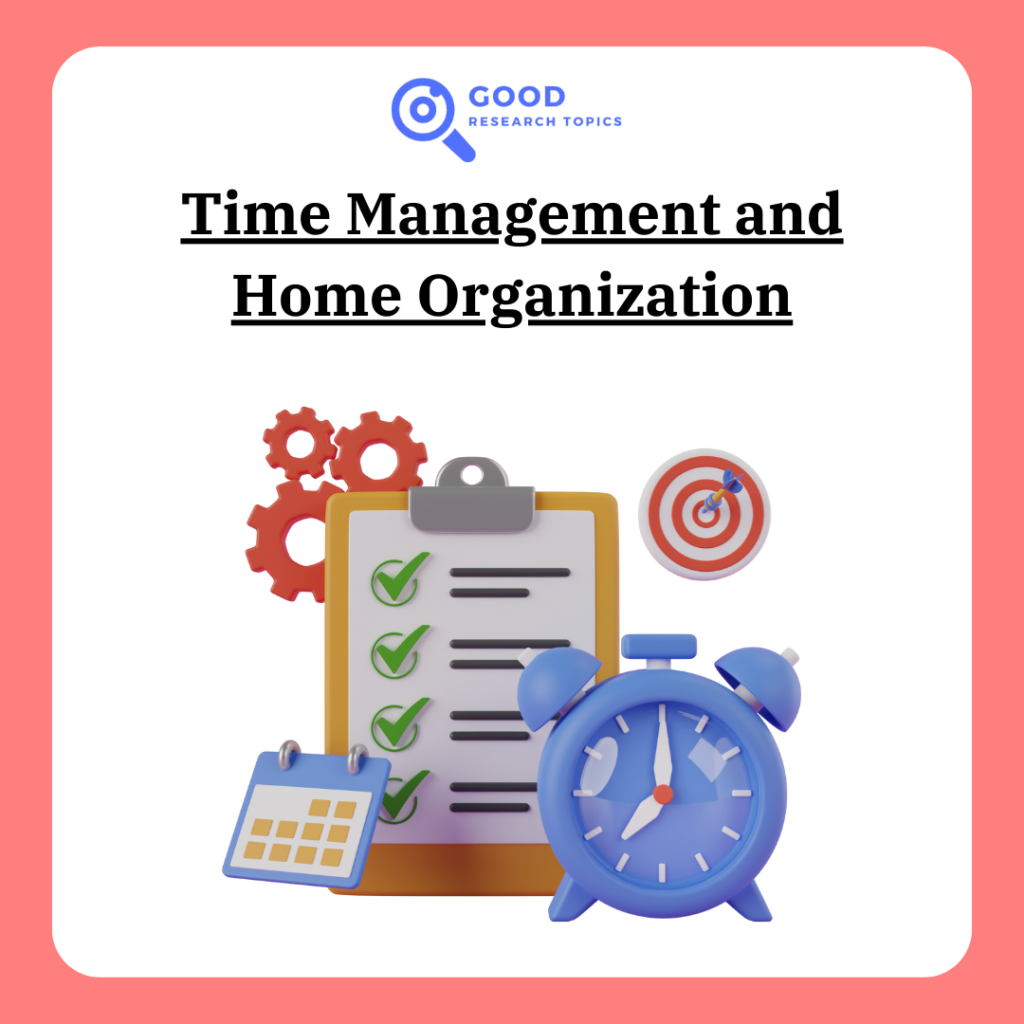Are you a Home Economics student wondering about Quantitative Research Topics? Well, here’s a simple guide just for you! Quantitative Research Topics for Home Economics Students involve studying measurable data related to household management, economics, and various aspects of home life. But what does that really mean?
Generally, Quantitative research is all about measurements and numbers. For Home Economics students, it means exploring topics like consumer behavior, budgeting, nutrition, or even the impact of technology on household duties—using numbers to understand trends, behaviors, or outcomes.
For instance, let’s say you’re curious about the relationship between family income and healthy eating habits. A quantitative study might involve surveying families about their income levels and comparing that data with their food choices. This helps in understanding how income influences the food preferences and nutritional habits of households.
Other fascinating topics could be analyzing the effectiveness of various cooking methods on food nutrition, investigating the correlation between household expenses and savings, or even examining the influence of social media on consumer buying patterns for household items.
So, Quantitative Research Topics for Home Economics Students are basically opportunities to explore and understand different aspects of home life using numbers and data. It’s like solving puzzles with information!
You May Also Like: Qualitative Research Topics for High School Students
What Is Quantitative Research In Home Economics?
Quantitative research in Home Economics involves using numerical data and statistical analysis to investigate and understand various aspects of household management, economics, and related areas. It focuses on collecting measurable information and using mathematical or statistical methods to draw conclusions about specific phenomena within the realm of home and family life.
In this field, quantitative research often involves gathering data through surveys, experiments, or observations that can be quantified, such as household budgets, nutritional intake, consumer spending patterns, time management in household tasks, or technological advancements affecting domestic activities. Researchers then use statistical tools to analyze this data, identifying patterns, correlations, and trends.
For example, a quantitative study in Home Economics might analyze the relationship between family income levels and the types of food purchased, examining how economic factors influence dietary choices. Researchers might collect data on income brackets and survey families about their grocery shopping habits to draw conclusions about spending patterns related to nutrition.
How To Choose Quantitative Research Topics For Home Economics Students
Here are five easy steps to help Home Economics students choose quantitative research topics:
1. Identify Your Interests
Start by exploring your personal interests in Home Economics. Consider topics that intrigue you, such as budgeting, nutrition, consumer behavior, time management, or technology’s impact on household tasks. Choose areas that you find fascinating and want to learn more about.
2. Conduct Preliminary Research
Look for existing studies, articles, or resources related to Home Economics. This exploration can help you discover popular topics, gaps in research, or emerging trends. Check reliable websites, academic journals, or books to get ideas and understand what topics have sufficient data for quantitative analysis.
3. Narrow Down Your Focus
Once you have a list of potential topics, narrow them down based on relevance, feasibility, and available data. Consider the scope of your research – it should be specific enough for in-depth analysis but broad enough to find ample information for quantitative investigation.
4. Consider Data Availability
Ensure that your chosen topic has accessible data or means to collect measurable information. Think about the methods you might use—surveys, experiments, or data sets—to gather quantitative data. The availability of data will significantly impact the feasibility and success of your research.
5. Assess Significance and Impact
Evaluate the importance and relevance of your chosen topic within the field of Home Economics. Consider the potential impact of your research—how it can contribute to understanding household management, inform practical solutions, or address relevant issues within domestic life.
Why Do Students Need Home Economics Research
Students need Home Economics research because it:
- Equips with Practical Life Skills: Teaches essential skills like budgeting, cooking, and time management for everyday life.
- Understands Household Dynamics: Explores family relationships, socio-economic influences, and decision-making within homes.
- Improves Quality of Life: Enhances living standards by promoting healthy habits and efficient home management.
- Develops Financial Literacy: Educates about budgeting, savings, and making informed financial decisions.
- Promotes Health and Well-being: Focuses on nutrition, healthy lifestyles, and hygiene practices for better health.
- Enhances Consumer Awareness: Educates about responsible consumption, consumer rights, and environmental impact.
- Prepares for Careers: Provides a foundation for various professions like nutritionists, chefs, counselors, or analysts in related fields.
List of 100+ Good Quantitative Research Topics For Home Economics Students
Here’s a list of quantitative research topics for Home Economics students across different fields:
Nutrition and Food Science

- The correlation between household income and dietary habits.
- Analyzing the nutritional content of different cooking oils.
- The impact of food labeling on consumer choices.
- Assessing the effectiveness of nutritional education programs in schools.
- Examining the relationship between food allergies and household meal planning.
Budgeting and Financial Management

- Analyzing the impact of advertising on household spending habits.
- The effectiveness of budgeting apps in managing household finances.
- Investigating the correlation between financial literacy and savings rates.
- Assessing the impact of inflation on household purchasing power.
- Analyzing the factors influencing consumer debt in different socio-economic groups.
Consumer Behavior and Decision-Making

- The influence of social media on purchasing decisions for household items.
- Analyzing trends in online versus in-store shopping for home products.
- Examining the impact of brand loyalty on consumer choices within households.
- Investigating the factors influencing sustainable and eco-friendly product purchases.
- The psychology behind impulse buying behavior in household shopping.
Family Dynamics and Relationships

- Analyzing the division of household chores based on gender roles.
- The impact of parenting styles on children’s dietary habits.
- Investigating the correlation between family communication and financial management.
- Examining the effects of family structure on budgeting and expenditure.
- Analyzing the impact of technology use on family interactions and bonding.
Time Management and Home Organization

- Assessing the effectiveness of time management techniques in household tasks.
- Analyzing the impact of decluttering on mental well-being within households.
- Investigating time allocation for meal preparation in dual-income households.
- The correlation between home organization and stress levels.
- Analyzing the use of technology in optimizing household routines and organization.
Home Economics Education and Curriculum

- Assessing the effectiveness of Home Economics education in high schools.
- Investigating the impact of practical cooking classes on students’ dietary choices.
- Analyzing the inclusion of financial literacy in Home Economics curricula.
- Examining the role of Home Economics in promoting sustainable living practices.
- Investigating student attitudes towards Home Economics as a subject.
Technology and Home Management

- Analyzing the impact of smart home devices on energy consumption.
- Investigating the use of meal-planning apps in managing household nutrition.
- The correlation between technology adoption and efficient home management.
- Assessing the impact of technology on time-saving in household tasks.
- Analyzing the digital divide and its effects on access to technology for home management.
Health and Wellness in Home Settings

- Investigating the relationship between mental health and household environments.
- Analyzing the correlation between home cooking and overall family health.
- Assessing the impact of home gardening on dietary choices and nutrition.
- The effectiveness of home-based exercise programs on family fitness levels.
- Analyzing the role of sleep quality in household productivity and well-being.
Sustainable Living and Environmental Impact

- Investigating household recycling habits and their environmental impact.
- Analyzing the adoption of sustainable practices in household cleaning routines.
- The correlation between eco-friendly product usage and household budgets.
- Assessing attitudes towards sustainable food choices within households.
- Investigating the impact of transportation choices on household carbon footprint.
Cultural Influences on Home Economics

- Analyzing cultural variations in traditional family recipes and cooking methods.
- Investigating the impact of cultural heritage on household traditions and practices.
- The correlation between cultural values and financial decision-making within households.
- Assessing the influence of cultural norms on home organization and cleanliness.
- Analyzing cultural differences in clothing and fashion expenditure within households.
Aging and Home Management

- Investigating the challenges of aging populations in managing household tasks.
- Analyzing the impact of home modifications on elderly independence.
- Assessing the use of technology for elderly-friendly home management.
- The correlation between nutrition and health in elderly household members.
- Investigating caregiving dynamics and stress levels in multigenerational households.
Gender Studies in Home Economics

- Analyzing gender-based disparities in financial decision-making within households.
- Investigating the impact of gender roles on time allocation for household tasks.
- Assessing the influence of gender stereotypes on consumer choices within families.
- The correlation between gender equality and household economic stability.
- Analyzing the role of education in challenging gender norms in home management.
Housing and Real Estate Economics

- Analyzing the correlation between homeownership and financial stability.
- Investigating the impact of housing market trends on household expenses.
- Assessing the influence of location on housing-related expenses within households.
- The effectiveness of housing subsidies in improving family well-being.
- Analyzing the impact of housing affordability on family budgeting.
Workplace and Home Life Balance

- Investigating the impact of remote work on household dynamics and time management.
- Analyzing the correlation between work hours and family spending habits.
- Assessing the effectiveness of strategies to balance work and home responsibilities.
- The influence of job flexibility on household organization and stress levels.
- Investigating the correlation between work-related stress and household relationships.
Fashion and Textiles in Home Economics

- Analyzing consumer preferences in purchasing sustainable and ethically-made clothing for the family.
- Investigating the impact of fashion trends on household clothing budgets.
- Assessing the correlation between textile waste and household consumption habits.
- The influence of cultural heritage on textile choices within households.
- Analyzing the role of fashion influencers on household clothing purchases.
Community and Social Impact of Home Economics

- Investigating the role of community-based initiatives in promoting household sustainability.
- Analyzing the impact of Home Economics education on community health and nutrition.
- Assessing the correlation between household practices and community environmental impact.
- The influence of community support systems on managing family finances.
- Investigating the impact of household volunteering on community well-being.
Media Influence on Home Economics

- Analyzing the impact of advertising on household product preferences.
- Investigating the role of social media influencers in promoting home management products.
- Assessing the correlation between media exposure and consumer behaviors within households.
- The influence of reality TV shows on household spending and lifestyle choices.
- Analyzing the portrayal of home economics topics in mainstream media and its effect on perceptions.
Mental Health and Household Management

- Investigating the correlation between home organization and mental well-being.
- Analyzing the impact of stress-reduction techniques on household dynamics.
- Assessing the influence of a peaceful home environment on family mental health.
- The relationship between mindfulness practices and efficient household management.
- Investigating the role of home-based therapies in supporting mental health within families.
Technology Adoption and Elderly Home Management

- Analyzing the use of technology for elderly-friendly home organization and safety.
- Investigating the correlation between technology adoption and cognitive health in elderly households.
- Assessing the influence of digital tools on elderly financial management within homes.
- The impact of technology on social connections and mental well-being among the elderly.
- Analyzing the effectiveness of technological innovations for aging-in-place strategies.
Social Media and Family Communication

- Investigating the impact of social media on family communication patterns.
- Analyzing the correlation between social media usage and family bonding activities.
- Assessing the influence of digital communication on conflict resolution within households.
- The relationship between online interactions and decision-making processes in families.
- Investigating the role of social media in shaping family values and traditions.
What Are The Problems Encountered By Home Economics Students?
Home Economics students may encounter various challenges during their studies, including:
1. Perception and Stereotypes
Misconceptions or societal stereotypes may undermine the importance of Home Economics, leading to a lack of recognition for the field’s relevance and significance.
2. Resource Limitations
Limited access to necessary resources like updated textbooks, kitchen equipment, or technology can hinder practical learning experiences.
3. Complexity of Topics
Some subjects within Home Economics, such as nutrition or financial management, might involve complex theories or technicalities that could be challenging for students to grasp easily.
4. Practical Application
Balancing theoretical knowledge with practical application can be difficult, especially if there’s insufficient hands-on experience or opportunities for real-life simulations.
5. Diverse Subject Matter
Home Economics covers a broad range of topics, from cooking to financial planning, which might overwhelm students who have varying interests and strengths in different areas.
6. Changing Family Dynamics
With evolving family structures and dynamics, understanding traditional and modern family roles and responsibilities may become challenging for students.
7. Technological Advancements
Keeping up with the rapid advancements in technology relevant to Home Economics (e.g., cooking gadgets, budgeting apps) might pose a challenge if students lack access or familiarity with these tools.
8. Limited Curriculum Emphasis
In some educational systems, the Home Economics curriculum might lack comprehensive coverage of crucial topics like sustainable living practices, cultural diversity, or current societal trends.
9. Career Recognition
Limited awareness or recognition of career opportunities within Home Economics fields might discourage students from pursuing related professions due to societal expectations or perceptions.
10. Integration with Core Subjects
Difficulty in integrating Home Economics with other core subjects like science, mathematics, or social studies could affect interdisciplinary learning opportunities for students.
Quantitative Research Topics For Home Economics Students Pdf
Here are the quantitative research topics for home economics students pdf.
Quantitative Research Topics For Home Economics Students In The Philippines
Here’s a table format presenting the top 10 quantitative research topics for Home Economics students in the Philippines:
| Quantitative Research Topics for Home Economics Students in the Philippines |
|---|
| 1. The impact of traditional Filipino diets on nutritional health. |
| 2. Assessing the nutritional value of common Filipino dishes. |
| 3. Analyzing spending patterns among different income groups in the Philippines. |
| 4. The influence of social media on purchasing behavior in Filipino households. |
| 5. Analyzing gender roles in household chores among Filipino families. |
| 6. The adoption of smart home technology in Filipino households. |
| 7. Assessing the impact of technology on time-saving in Filipino household tasks. |
| 8. The correlation between family structure and budget allocation in the Philippines. |
| 9. The impact of remittances on household budgeting in the Philippines. |
| 10. Investigating financial literacy levels among Filipino households. |
Research Title About Home Economics Cookery
Here’s a table showcasing research titles specifically related to Home Economics Cookery:
| Research Titles About Home Economics Cookery |
|---|
| 1. Exploring Traditional Filipino Cooking Techniques and Their Evolution. |
| 2. Analyzing the Nutritional Impact of Different Cooking Methods on Filipino Dishes. |
| 3. Investigating the Role of Herbs and Spices in Enhancing Flavor and Health in Filipino Cuisine. |
| 4. Assessing the Use of Local Ingredients in Contemporary Filipino Cooking. |
| 5. Examining the Influence of Climate and Geography on Cooking Practices in the Philippines. |
| 6. Analyzing the Effectiveness of Cooking Workshops in Promoting Healthy Eating Habits. |
| 7. Investigating the Adaptation of Filipino Cooking to Modern Kitchen Technology. |
| 8. Assessing the Evolution of Fusion Cuisine in Filipino Cooking. |
| 9. Exploring the Psychological Impact of Aromas and Presentation in Filipino Culinary Art. |
| 10. Analyzing the Preservation and Revival of Traditional Cooking Methods in Filipino Homes. |
Thesis Title About Home Economics In The Philippines
- “Empowering Filipino Families: Enhancing Financial Literacy Through Home Economics Education.”
- “Promoting Sustainable Household Practices: The Role of Home Economics in Urban and Rural Filipino Communities.”
- “Nourishing Filipino Homes: A Study on the Impact of Home Economics on Nutrition and Health.”
Example Of Quantitative Research About Home Economics
- “Analyzing Household Budget Allocation for Nutritious Food in Different Income Groups in the Philippines.”
- “The Effect of Home Economics Education on Budgeting and Saving Behaviors in Filipino Families.”
- “Measuring the Influence of Media on Consumer Behavior in Filipino Households: A Quantitative Study.”
Research Title About Home Economics With Author
- “Sustainable Living Through Home Economics: A Study on Filipino Household Expenditure” by Juan Dela Cruz.
- “Technology Integration in Home Management: An Analysis of Its Impact on Filipino Homes” by Andrea Gomez.
What Is A Good Research Title For Home Economics?
Here’s a table providing a few examples of good research titles for Home Economics:
| Good Research Titles for Home Economics |
|---|
| 1. “Empowering Families: The Impact of Home Economics Education on Financial Management in the Philippines.” |
| 2. “Sustainable Living Practices: A Holistic Approach to Home Management and Nutrition in Filipino Households.” |
| 3. “Consumer Behavior Trends: Analyzing Household Spending Patterns through the Lens of Home Economics.” |
| 4. “Technology Integration and its Influence on Home Management Efficiency: A Study in the Philippine Context.” |
| 5. “Promoting Well-being: The Role of Home Economics in Cultivating Healthy Lifestyles among Filipino Families.” |
Conclusion
Quantitative research topics for Home Economics students offer a diverse landscape ripe for exploration and discovery. These topics provide a gateway to understanding and addressing pertinent issues within households, emphasizing numerical analysis and empirical study. Delving into areas such as nutrition, budgeting, consumer behavior, family dynamics, and technological integration, these research avenues offer a lens through which to comprehend the intricacies of domestic life.
By analyzing spending patterns, nutritional habits, or the influence of technology on household management, students can unravel the complex tapestry of factors shaping modern family life. Understanding the impact of cultural heritage on cooking practices, the dynamics of family communication, or the effects of financial literacy interventions enables a comprehensive comprehension of Home Economics.
These research topics aren’t merely academic pursuits; they hold practical significance. They pave the way for strategies to enhance household well-being, foster sustainable practices, and empower families with valuable skills. Through empirical investigations and data-driven insights, Home Economics students can contribute meaningfully to improving lifestyles, promoting health, and strengthening the economic fabric of households in the Philippines and beyond.
Frequently Asked Questions
Why Is Home Economics Not Taught In Schools Anymore?
Home economics is less commonly taught due to curriculum shifts towards STEM subjects, budget cuts, and changing educational priorities emphasizing other skill sets.
What Are The Three Basic Economic Problems In The Study Of Economics?
The three basic economic problems in the study of economics are scarcity, choice, and opportunity cost.
What Is A Research Topic That Is Related To Home Economics Strand Quantitative?
A quantitative research topic related to the Home Economics strand could be: “Analyzing the Impact of Nutrition Education Programs on Improving Dietary Habits Among Adolescents: A Quantitative Study.”



